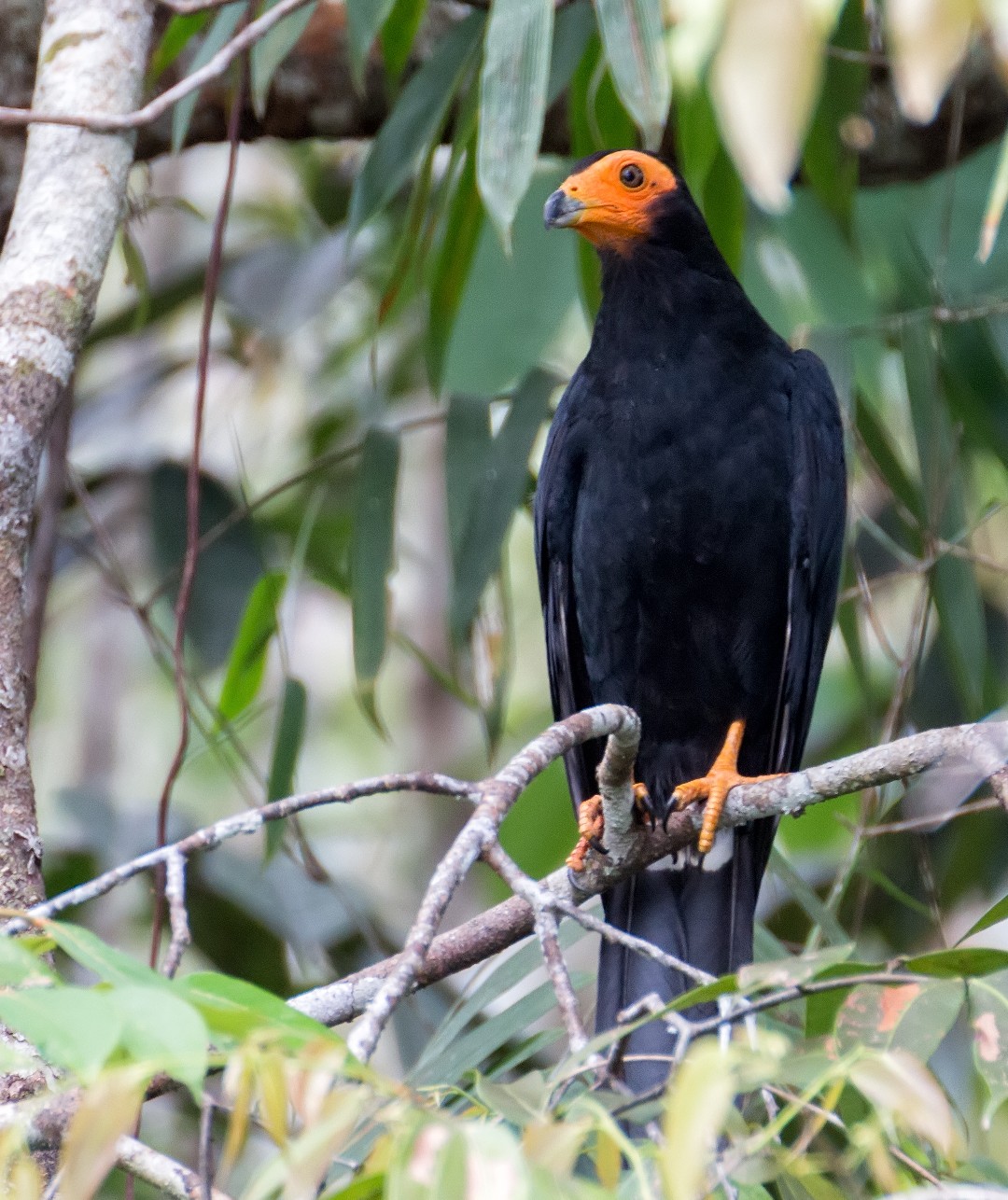Black Caracara
A species of Black Caracara Scientific name : Daptrius ater Genus : Black Caracara
Black Caracara, A species of Black Caracara
Botanical name: Daptrius ater
Genus: Black Caracara
Content
Description General Info
 Photo By Fernando Flores , used under CC-BY-SA-2.0 /Cropped and compressed from original
Photo By Fernando Flores , used under CC-BY-SA-2.0 /Cropped and compressed from original Description
Adult black caracara are a glossy black except for the distinctive white band on the base of the tail, and yellow to orange-red feet and face. The adults appear similar to those of their closest relative, the red-throated caracara, however they have distinctly long and narrow wings and tail, as well as a black beak. Additionally, the red-throated caracara can be distinguished from the black caracara by their red throats. The average adult length is 41-47cm. The females of this species average 350-440g and are typically larger than the males that have an average weight of 330g. Juveniles can be identified by their dull black plumage, pale yellow face and the 3-4 black bars found on the rectrices. When observing flight from a distance, it is notable that Daptrius ater rarely soars, but instead can be seen continuously flapping. 
Size
47 cm
Nest Placement
Cavity
Feeding Habits
Black Caracara consumes a variety of prey such as bird fledglings, small mammals, carrion, amphibians, and fruit. Exhibiting opportunistic feeding behavior, they forage across foliage and may scavenge near human settlements.
Habitat
Black Caracara typically inhabits subtropical or tropical moist lowland forests, preferring areas such as gallery forests, wooded savannas, and secondary forests. These birds are often found near edges of forests or along larger rivers and are also known to occupy mangrove ecosystems and disturbed habitats associated with water. While black Caracara can inhabit regions from sea-level, they are generally found at elevations ranging up to 900 meters. Though widespread, black Caracara may be absent from seemingly suitable environments within their geographical range, which includes broad regions across northern South America.
Dite type
Carnivorous
General Info
Feeding Habits
Bird food type
Behavior
The black caracara are most often seen in pairs or family groups of 3-4, but can be spotted alone. They have been observed flying in straight patterns with continuous flapping, walking along rivers, and perching in tall trees. Other common sightings have famously associated them with tapir and capybara, as they have been observed picking ectoparasites from the fur. This interaction can be considered mutualistic as tapirs notably solicit nearby black caracara using a call, then lay still to facilitate tick removal. They are also known to scavenge around human settlements and exhibit the ability to fish along rivers. 
Distribution Area
It is found in Bolivia, Brazil, Colombia, Ecuador, French Guiana, Guyana, Peru, Suriname, and Venezuela. Its natural habitats are subtropical or tropical moist lowland forest and heavily degraded former forest. Common habitats include gallery forest and wooded savanna that are situated between altitudes of 0 to 900m. Black caracarca can also be found in mangroves and disturbed forested habitats along water. 
Species Status
IUCN estimates a fluctuating population of 1000-10000 individuals, with an adult population of 670-6700. Population declines have been documented over the past 10 years, however it is not presently considered critical. The designation of least concern is attributed to their large range, ability to survive in fragmented forest, and their diverse diet. 
Scientific Classification
Phylum
Chordates Class
Birds Order
Diurnal Birds of Prey Family
Falcons and caracaras Genus
Black Caracara Species
Black Caracara